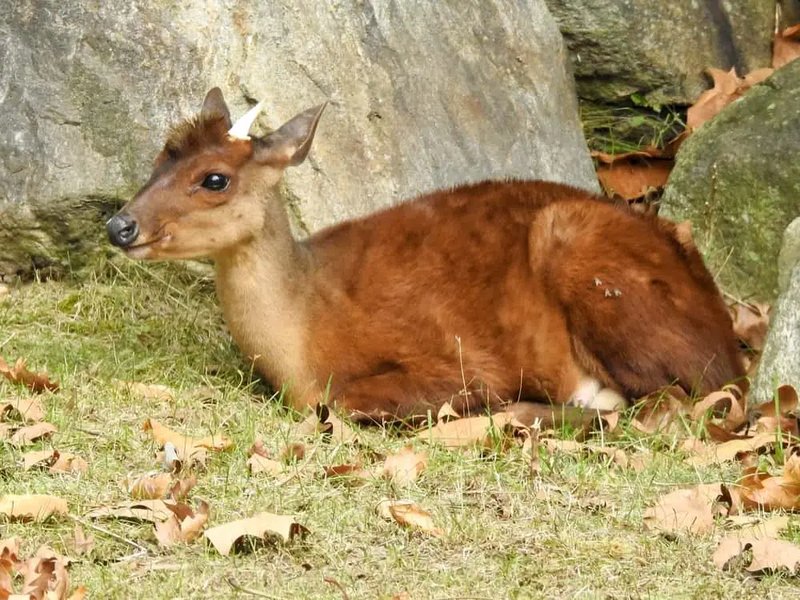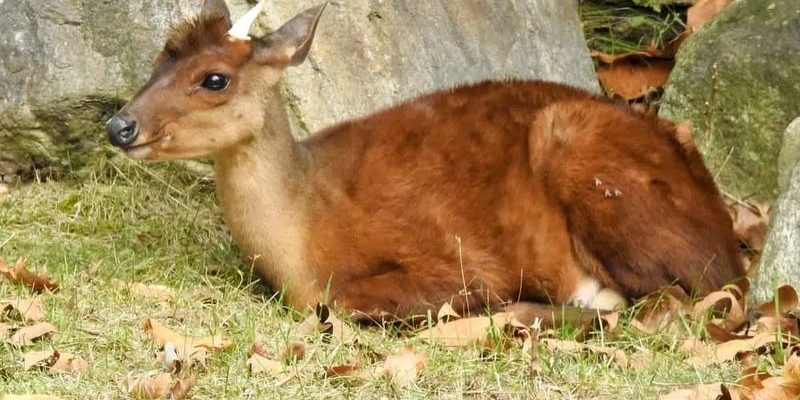
Elks are fascinating creatures, but knowing the differences between them and their look-alikes can enhance your nature adventures. Much like how a chocolate chip cookie and a brownie both satisfy your sweet tooth but offer unique flavors, each of these animals has its own distinct characteristics. By the end of this article, you’ll be better equipped to recognize these animals and appreciate their unique qualities.
1. Moose
Moose are probably the most well-known relatives of the elk. Both belong to the Cervidae family, which makes it easy to see why they might be confused. However, moose are generally much larger. A bull moose can weigh up to 1,500 pounds!
One of the easiest ways to tell a moose apart from an elk is by looking at their distinctive features. Moose have long legs and a large, drooping nose. Their antlers also differ; they are broad and flat, unlike the pointed antlers of the elk. If you spot one in the wild, observe its long, slender body and the hump on its back—these are classic moose traits that can help you differentiate them from elk.
Another interesting fact about moose is their affinity for water. They often wade into lakes or rivers to feed on aquatic plants. So, if you see a large creature splashing around in a body of water, you might just have a moose on your hands!
2. Red Deer
If you venture across the pond to Europe, you might encounter the red deer. These animals can be quite similar in appearance to elk, but there are a few key differences. First off, red deer are generally smaller than elk. An adult male red deer typically weighs between 400 and 500 pounds, while elk can weigh up to 700 pounds or more.
The antlers of a red deer are usually less branched than those of an elk, and their coat tends to be a reddish-brown during the summer, which gives them their name. You might spot them roaming through dense forests, especially during the mating season when they emit a distinctive roar.
One fun way to remember the difference is to think about their habitats. While elk enjoy open forests and grasslands, red deer prefer denser woodlands. If you’re in Europe and hear a loud bellowing noise, you may just have a red deer nearby!
3. Sika Deer
Sika deer are native to East Asia but have made their way to other parts of the world. These deer are smaller than both elk and red deer, generally weighing about 100 to 250 pounds. They have a more compact and stocky build, which is a significant difference from the taller, lankier elk.
One distinctive feature of sika deer is their spotted coat, especially during the summer months. This dappled pattern helps them blend into their forested environment. You might be surprised to find that while they share a family tree with elk, their behaviors can be quite different. Sika deer are known to be more vocal, often communicating with a range of sounds.
If you see a deer that appears more petite and has spots, that’s likely a sika deer, not an elk!
4. Fallow Deer
Fallow deer are another species you might confuse with elk, particularly because of their similar body shape. However, they are much smaller, typically weighing between 100 and 300 pounds. They also have a variety of coat colors, from chocolate brown to white, adorned with white spots.
What sets fallow deer apart are their flat, palmate antlers, which spread out like the palm of a hand. Unlike the branching antlers of an elk, these antlers have a very unique shape that makes them easy to identify.
These deer are social creatures and tend to live in herds, which can be a fun sight to observe. If you see a group of smaller, spotted deer together, you can bet they are fallow deer, not elk!
5. Reindeer (Caribou)
Reindeer, also known as caribou, are closely related to elk and share a lot of similarities, especially in their size and build. Both are large, with males averaging about 400 pounds, but reindeer are particularly well-adapted to cold climates. Their fur is thicker and they have large hooves, which help them navigate snowy terrains.
However, reindeer are unique because both males and females grow antlers, unlike elk, where only the males do. When comparing them, you’ll notice that reindeer antlers tend to have a more rounded appearance.
If you’re in the Arctic regions and see a herd of large, antlered creatures grazing on lichen, they are most likely reindeer, not elk!
6. Bighorn Sheep
Now, you might be wondering how bighorn sheep fit into the elk look-alike category. While they are a completely different species, their strong build and similar habitats often lead to confusion. Bighorn sheep are stockier and can weigh up to 300 pounds, which is on the smaller side compared to elk.
Their most distinguishing feature is their impressive curved horns that can weigh up to 30 pounds! These horns are much more spiral-shaped than elk antlers. Bighorn sheep prefer rocky terrains and can often be found in mountainous areas, while elk tend to favor forests and valleys.
If you’re out hiking and see a large animal with curled horns climbing rugged cliffs, it’s likely a bighorn sheep, not an elk!
7. Antelope
Antelopes come in many shapes and sizes, but you might find some species that resemble elk from a distance. Generally lighter in build, antelopes can weigh anywhere from 100 to 300 pounds. Unlike elk, antelopes have a more slender structure and longer legs, making them incredibly fast runners.
While elk are primarily found in North America, antelopes are typically found in Africa and parts of Asia. Their coats can vary from light tan to deep brown, but they often have distinctive white markings on their faces and underbellies that can help you tell them apart from elk.
If you spot a quick-moving creature sprinting across an open field with sharp, pointed horns, chances are it’s an antelope and not an elk!
8. Chital (Spotted Deer)
Chital, or spotted deer, are another species that might catch your eye. They are native to the Indian subcontinent and are known for their striking spotted coat. While they are much smaller than elk, weighing around 100 to 200 pounds, their beautiful markings can sometimes make them seem similar, especially when viewed from a distance.
Chital have a more slender build, and only the males grow antlers, which are typically less impressive than elk antlers. Their habitats usually consist of grasslands and open forests, where they graze peacefully.
If you see a group of small, light brown deer with white spots, you can confidently say they are chital, not elk!
9. Kudu
Kudu are large African antelopes that can also be mistaken for elk due to their size. Males can weigh between 400 and 600 pounds, and they sport long, twisted horns that give them a unique appearance. Kudu have a more slender body compared to elks, and their coats are usually a grayish-brown with white stripes along their sides.
Unlike elk, which have a more uniform coloration, kudus have a striking appearance with their vertical stripes and long legs. They tend to inhabit dense bush and woodland areas, often moving silently among the trees.
When spotting these large creatures, if you notice their unique spiral horns and stripes, you know you’re looking at a kudu and not an elk!
10. Cape Buffalo
Lastly, the Cape buffalo is an animal that, at a glance, might seem similar to an elk due to its large, robust body. However, Cape buffalo are much bulkier, weighing in at around 1,000 pounds or more. Their distinctive curved horns are much thicker than elk antlers and can create an impressive silhouette.
Cape buffalo are social animals and often roam in herds. They prefer grasslands, where they graze on grasses rather than browsing treetops like elk do. If you find yourself in Africa and see a massive creature with hefty horns, it’s likely a Cape buffalo and not an elk.
In conclusion, while elk share similarities with a variety of other animals, each species has its own unique traits that set them apart. Whether it’s the size, shape of the antlers, or even their habitats, understanding these differences can enrich your wildlife observations. So, next time you’re out exploring nature, take a moment to appreciate the diversity and beauty of these remarkable animals. Each one plays a role in the ecosystem, making our world a more vibrant place.

